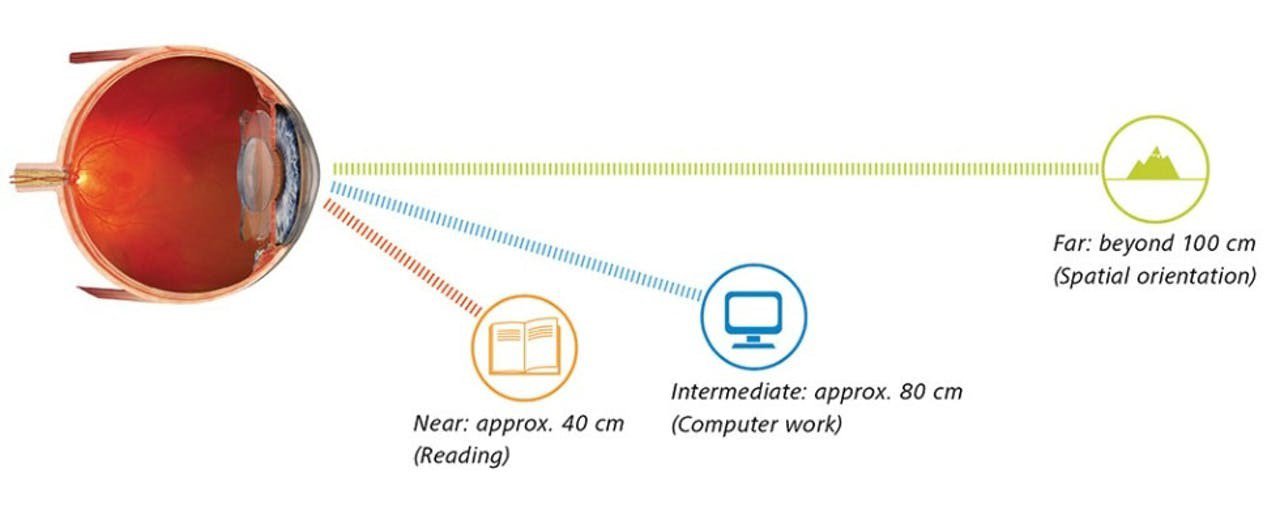A cataract is one of the most common eye diseases and is a part of the normal aging process. After the age of 50, it is quite probable that the human eye starts to develop some form of this ocular disease. The word cataract is derived from the Latin cataracta, meaning ‘waterfall’ and from the Ancient Greek καταρράκτης (katarrhaktēs), which means ‘down-rushing’. Just like how rapidly rushing water is viewed as white, it may be a metaphorical term to describe the similar appearance of advance ocular opacities.
What is cataract?
A cataract is the clouding or opacification of a normally clear eye lens. The natural lens of the eye, also known as a crystalline lens is mostly made of water and protein. Due to a change in that protein structure over time, the natural lens becomes increasingly cloudy – gradually causing the cataract. Cataract is one of the leading causes of blindness in the world. Thankfully, with the advancement of cataract surgery, it is now an easily treated condition in most cases.
Causes and risk factors of cataracts include diabetes, excessive exposure to sunlight, smoking, previous eye injury or inflammation, previous eye surgery and prolonged use of corticosteroid medications. Certain other medical conditions are also associated with the early development of cataracts. A small group of people may also have congenital cataracts.
Signs and symptoms of cataract
Patients often don’t realise they have cataracts until their vision starts to cloud and dramatically impair their daily lives. Signs and symptoms of cataracts include blurred or dim vision especially at night, sensitivity to light and glare and double vision. Left untreated, a cataract may lead to complete loss of vision.
There are no studies that have proven how to prevent cataracts or slow the progression of cataracts. But in general most doctors would recommend the use sunglasses, as there is a known link between ultraviolet light and the formation of cataracts. Besides that, one should stop smoking and reduce excessive alcohol intake as there is a relationship between those two behaviours and cataract formation. Medical conditions such as diabetes need to be adequately managed, as cataract formation is normally earlier in patients with poorly controlled diabetes. Besides that, a healthy diet rich in vitamins and minerals is also said to reduce the risk of cataract formation.
Cataract treatment
One should suspect that he or she has a cataract when their vision starts to become blur. They should consult an Ophthalmologist who can easily confirm the diagnosis. The good news is that a cataract can be treated easily and effectively with a safe, routine procedure by replacing the blurred eye-lens with an Intraocular Lens (IOL). Cataract surgery is now mainly done under local anaesthesia and is a painless, safe and quick surgery.
The success rate of the surgery is also extremely high and is rarely associated with risk of infection, risk of posterior capsule rupture, lens drop or retinal detachment. These complications are extremely rare and should not deter a person from getting treatment for cataract surgery.
Choosing an intraocular lens (IOL)
In modern cataract surgery, the clouded crystalline lens is removed and replaced by an artificial intraocular lens (IOL). Intraocular lenses represent a highly innovative technology – both in terms of corrective power and the quality of vision provided. Different types of intraocular lenses are available today, enabling good vision at one, two or all three distances:
- Near: Approx. 40 cm (Reading).
- Intermediate: Approx. 80 cm (Computer work).
- Far: Beyond 100 cm (Spatial orientation).

The decision on whether distant or near sightedness should be corrected depends on the patient's lifestyle and visual needs. The decision should be made in agreement with the surgeon after a close consultation with the patient
Intraocular lenses are usually made of acrylate – a soft, synthetic, and biocompatible material. A typical IOL measures approximately between 11 and 13 mm in diameter. The thickness of the lens can vary, depending on its refractive power. The corrective power of the lens is individually calculated and may differ for each eye. An IOL is transparent and neither visible nor perceptible in the eye.
Actual IOL size compared to an almond
Topvision Eye Specialist Centre
Topvision Eye Specialist Centre is principally a medical eye care group offering a multitude of eye care services ranging from general eye care and evaluation to treatment of complex eye diseases. Our Consultant Ophthalmologists and Eye Surgeons are specialised in the fields of cataract and retina surgery, glaucoma filtering surgery, corneal and external eye diseases, oculoplastic surgery, pterygium excision with conjunctival autograft and paediatric ophthalmology. Established in year 2010, the Group has presence in Selangor, Negeri Sembilan and Johor with 7 ambulatory care surgical centres.
Related articles
